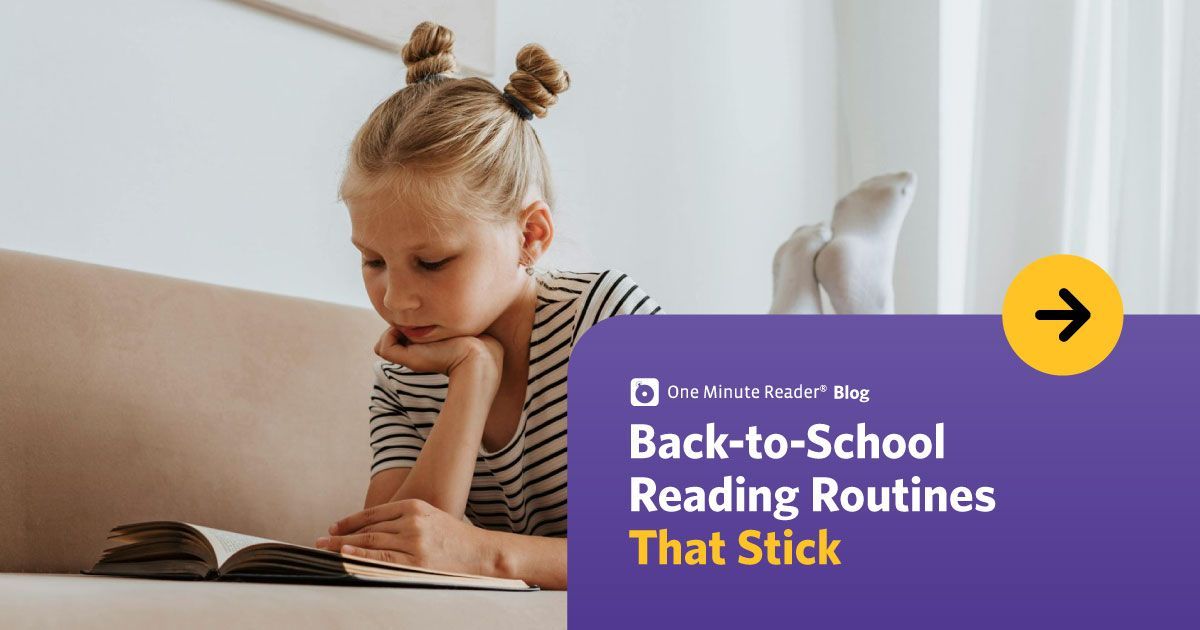Blog
Questions About Reading Levels? We’ve Got Answers.
Kids will make optimal reading progress when they work in material at the appropriate level.
Experts agree that this is true, but the problem is that the definition of “appropriate level” changes depending on the context. When should you give readers material at their independent level? How about their instructional level? What is the difference between the two? And is it ever appropriate to let them work at their frustration level? If you’ve ever found yourself asking these questions, you’ve come to the right place! We’re here to break it down for you.
Independent vs. Instructional Level: What’s the Difference?
A child's independent reading level is the level at which the child can read successfully without help. Independent-level material is material that the student reads fluently without difficulty. Experts recommend that kids’ accuracy should be around 98% at this level and that they should be able to answer 90% or more of the comprehension questions correctly. Kids can use independent-level material when reading for enjoyment or when practicing a new reading strategy. Ultimately, we want kids reading independently at their grade level.
A child's instructional reading level is the level at which a child can read with support from a teacher and/or program. Because of this support, the child's instructional level is higher than their independent level. According to experts, a child's instructional level is the level of material in which they demonstrate at least 90% accuracy and a score of 60% or better in comprehension. Kids will often read material at or slightly above their instructional reading level in a fluency intervention. The One Minute Reader Strategy includes teacher modeling, repeated reading, and progress monitoring. With these supports in place, working at or slightly above instructional level challenges the child and accelerates their reading achievement.
Determining a Child’s Independent and Instructional Reading Level
Educators often use a reading inventory to determine kids’ instructional and independent reading levels. These tools are designed to accurately assess students’ reading abilities. Reading inventories and benchmark assessments help teachers identify whether there is a need for a reading intervention.
One Minute Reader: Independent or Instructional?
Kids using One Minute Reader should be working at or slightly above their instructional level. This is because the program provides audio support and other scaffolding to accelerate progress. With this support, the kids can handle more challenging material.
What About “Frustration Level”?
A child's frustration level is a level at which fluency and expression are lacking. The child is reading word-for-word, halting, and with less than 90% accuracy and less than 60% comprehension. Typically, teachers avoid having students read this material. However, if a child is asking to read something too challenging, there is no harm in letting them try, especially with support. They might surprise you. In this video, Candyce Ihnot (reading specialist and founder of Read Naturally) shares the unique story of a student wanting to work in a more challenging level. Although he needed a lot of help at first, he made significant progress over time. He was engaged and motivated enough to rise to the challenge.
Communication with Schools
Often, parents will receive a reading inventory report from their child's teacher or school. For example, the report might say a fifth-grade student’s instructional reading level is at the fifth-grade level. You may assume this means the child is reading at grade level. However, this is not the case. If the child's instructional reading level is at the fifth-grade level, their independent reading level is lower than that—and, thus, below grade level.
For More Information…
This One Minute Reader blog article explains how the One Minute Reader Strategy allows students to select engaging material at a level that might feel “too hard” (instructional level) at first—but, thanks to the Strategy, students experience success, build confidence, and make progress quickly.
Highlighted Posts
Ready to see an improvement in your child's reading?
Sign up today and get seven days for FREE.
One Minute Reader is just $8 per month after your free trial.


